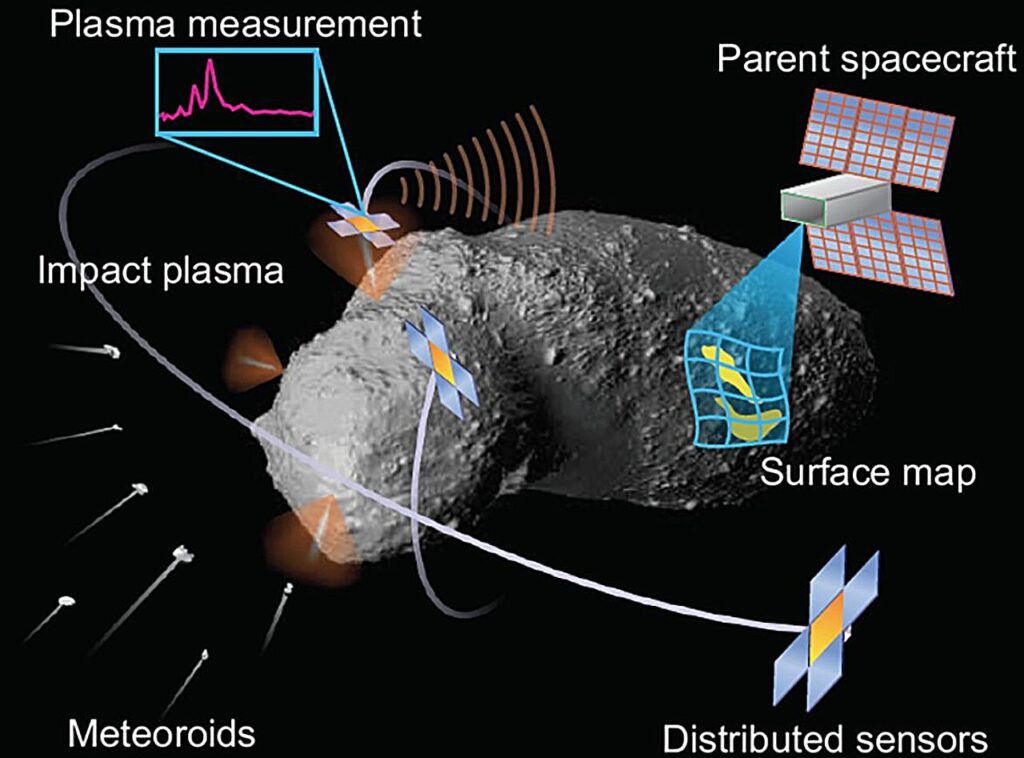Scientists are developing the Meteroid Impact Detection technique for Exploration of Asteroids project. According to the project, a swarm of satellites is to be sent to one of the asteroids. They will have to draw up a detailed map of it. It will help to understand how often space collisions occur.

NASA’s swarm of satellites
It seems that every month there is a new story about the discovery of a new asteroid. Observing these small bodies with ground-based and even space-based telescopes helps to trace their general trajectory. But it is much more difficult to understand what they are made of using such “remote sensing” methods.
To do this, many projects are getting closer to the asteroid itself, including a project by Dr Sigrid Elshot and her colleagues at Stanford, which was supported by NASA’s Advanced Concepts Institute in 2018. It uses an advanced set of plasma sensors to detect the composition of an asteroid’s surface by exploiting a unique phenomenon — meteorite impacts.
The project, known as Meteroid Impact Detection for Exploration of Asteroids (MIDEA), has an architecture that has recently become more prominent — a swarm of small satellites coordinated around a main craft. The satellites will be plasma sensors with one specific task: to detect the characteristics of the debris plume from an asteroid after a meteoroid impact.
A new mapping architecture
Such collisions occur more often than one might think. The authors estimate that they can map the composition of an asteroid’s surface with a resolution of up to 1 m in about 50 days. This is after taking into account some reduction in the number of asteroids detected due to orbital constraints and other considerations.
So how will this architecture work? Firstly, there would be a main spacecraft, originally conceived as a CubeSat, weighing about 50 kg. It would use a standard CubeSat propulsion system, such as an ion engine, to get to the asteroid. Once there, it would hover several hundred metres above the surface and deploy a series of small sensor satellites.
According to calculations in the article, these satellites will weigh about 250 g, which will allow them to use traditional materials such as rigid printed circuit boards rather than flexible ones that do not have the same proven flight history. Each of them will carry a sensor whose task is to be aimed at the asteroid, no matter where it is in its orbit.
How the swarm of satellites will work
Each sensor satellite will also have a position control equipment called “controlled reflectivity”. The satellite will adjust the pointing direction of the sensor by actuating a reflective surface facing towards or away from the sun and using this reflective pressure to point itself in the desired direction.
A series of these sensors is needed to capture any meteoroid impact plume from as many different angles as possible, allowing the sensors to collect as much data as possible. The sensors would then transmit the data to a central spacecraft, which would collate the data streams and send the complete package back to Earth. On Earth, the data could be analysed using an in-flight mass spectrometer to determine the composition of the plume and, therefore, the part of the surface from which it came.
Technology development prospects
While this sounds relatively simple in theory, there are many unknowns in practice, including how to manage all the different satellites in orbit around a single asteroid. This includes the overall architecture design, which could help implement the other subsystems.
This development is currently on hold, however, as MIDEA has not yet received a Phase II grant from NIAC or funding from any other source. Perhaps someday, thousands of asteroids in our vicinity will be targeted by swarms of small orbiters.
Source: phys.org

